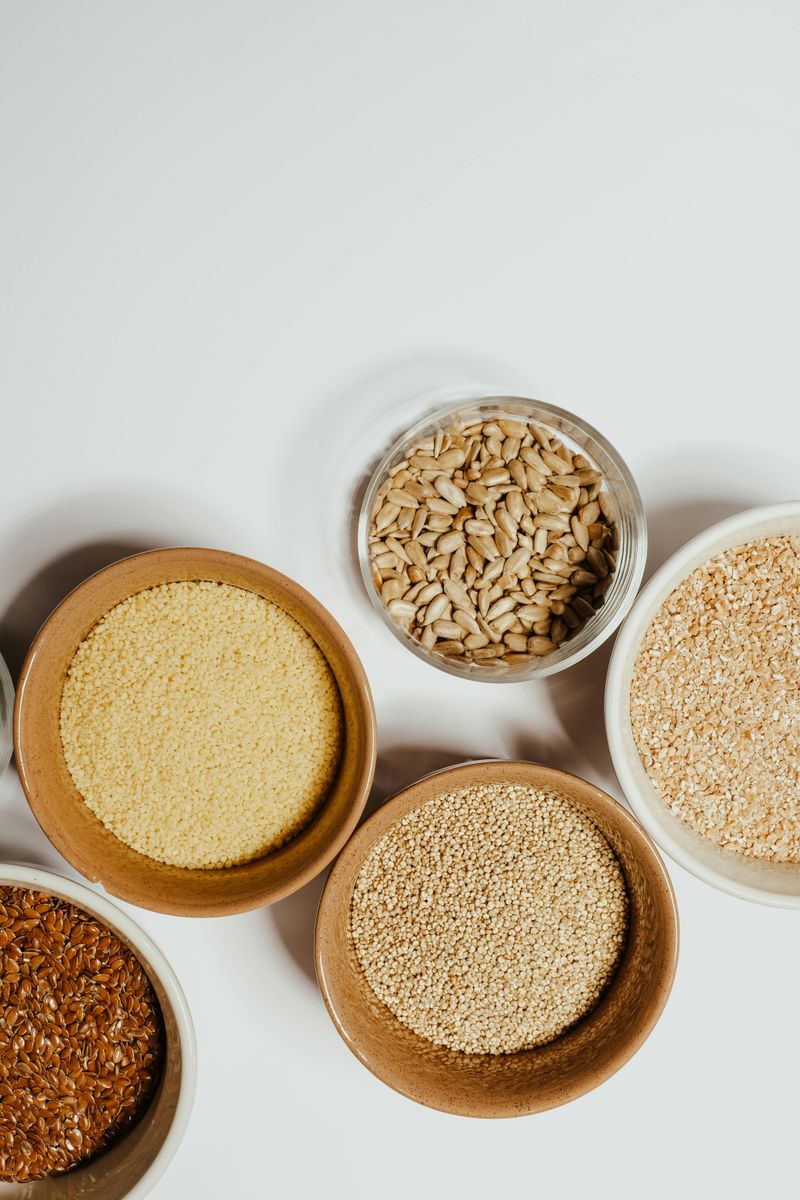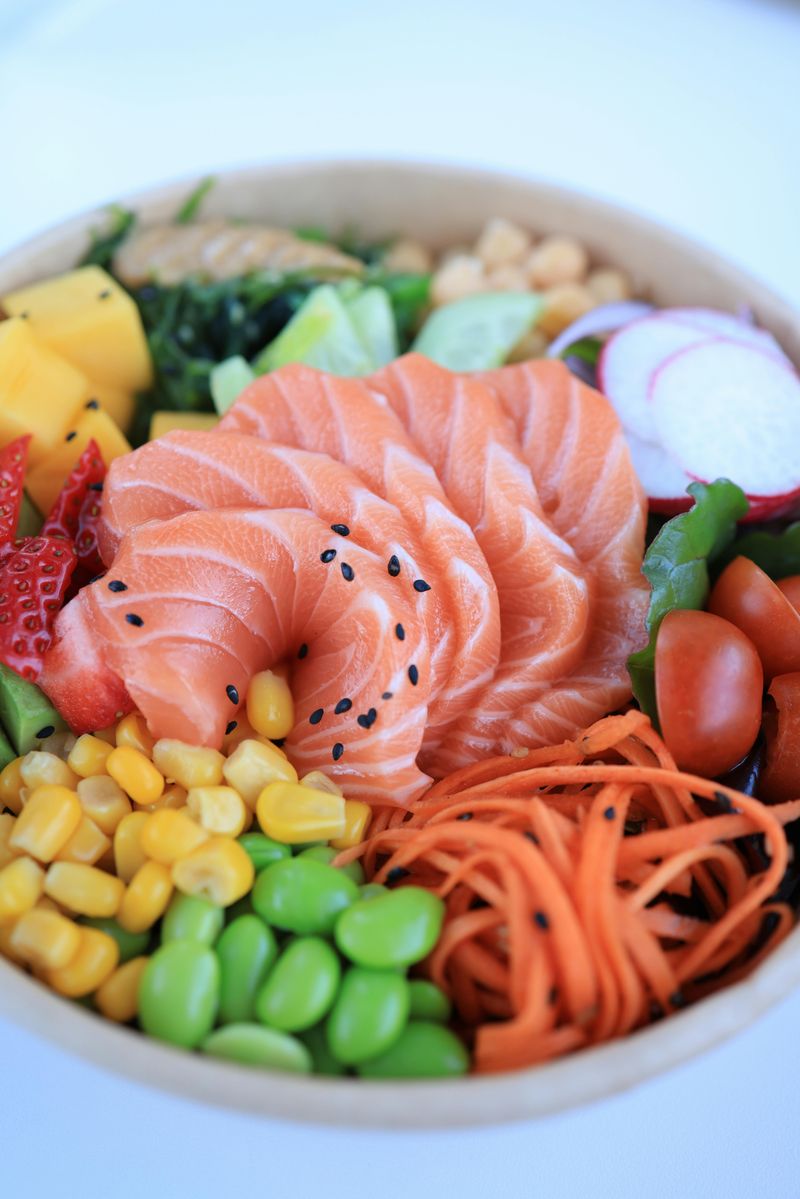Turning 40 brings exciting changes to your body, including shifts in metabolism, digestion, and nutritional needs. What worked in your 20s and 30s might not serve you as well now, making it essential to adjust how you eat. The good news is that mindful eating habits can help you feel energized, maintain a healthy weight, and support your body through these natural transitions.
1. Make Protein Your Plate’s Best Friend
After 40, your muscles start losing mass faster than before, which makes protein more important than ever. Including a good source of protein at every meal helps rebuild muscle tissue, keeps you feeling full longer, and stabilizes your blood sugar throughout the day.
Aim for lean meats, fish, eggs, beans, Greek yogurt, or tofu at breakfast, lunch, and dinner. Even snacks benefit from a protein boost—think cheese with fruit or hummus with veggies.
Your body needs consistent protein intake to maintain strength and energy. Making this simple shift can dramatically improve how you feel daily.
2. Embrace Whole Grains and Fiber-Rich Foods
Whole grains and fiber work like a cleaning crew for your digestive system, sweeping things along smoothly while keeping you satisfied. Brown rice, oatmeal, quinoa, and whole wheat bread provide steady energy without the crashes that come from refined white flour products.
Fiber also helps lower cholesterol, regulate blood sugar, and maintain a healthy weight—all increasingly important after 40. Women need about 25 grams daily, while men should aim for 38 grams.
Start swapping white bread for whole grain versions, or add chia seeds to your morning smoothie. Small changes add up to big health benefits over time.
3. Welcome Healthy Fats to Every Meal
Your brain, heart, and joints need healthy fats to function properly, especially as you age. Omega-3 fatty acids found in salmon, walnuts, and flaxseeds fight inflammation, support brain health, and keep your skin glowing.
Olive oil, avocados, nuts, and seeds provide monounsaturated fats that protect your heart and help absorb essential vitamins. Don’t fear fat—just choose the right kinds and watch your portions.
Drizzle olive oil on salads, snack on almonds, or add half an avocado to your lunch. These simple additions nourish your body in ways that low-fat diets never could.
4. Eat the Rainbow Every Single Day
Colorful fruits and vegetables contain different antioxidants, vitamins, and minerals that your body craves after 40. Red tomatoes offer lycopene, orange carrots provide beta-carotene, and dark leafy greens deliver iron and calcium.
Variety matters because each color represents unique nutrients that protect against disease and aging. Challenge yourself to include at least three different colors on your plate at each meal.
Frozen vegetables count just as much as fresh ones, making this habit affordable and convenient year-round. The more colors you eat, the more nutrients you give your body to thrive.
5. Cut Back on Added Sugars and Refined Carbs
Sugar sneaks into everything from bread to salad dressing, and your body handles it differently after 40. Refined carbs and added sugars spike your blood sugar, increase inflammation, and make weight management much harder.
Check labels for hidden sugars listed as corn syrup, dextrose, or maltose. Swap sugary cereals for oatmeal, soda for sparkling water with lemon, and candy for fresh fruit when cravings hit.
Reducing sugar doesn’t mean eliminating all treats—just being more intentional about when and how much you consume. Your energy levels and waistline will thank you for this adjustment.
6. Slow Down and Savor Every Bite
Rushing through meals confuses your body’s hunger signals and often leads to overeating. When you eat slowly and chew thoroughly, you give your brain the 20 minutes it needs to register fullness.
Put your fork down between bites, notice the flavors and textures, and actually taste your food instead of just swallowing it. This practice improves digestion and helps you enjoy meals more fully.
Mindful eating transforms mealtime from a rushed task into a pleasant experience. You’ll likely eat less while feeling more satisfied—a win-win for your body and mind.
7. Eliminate Distractions While Eating
Scrolling through your phone or watching TV while eating disconnects you from your body’s signals. Studies show that distracted eating leads to consuming 25% more calories because your brain doesn’t register the meal properly.
Create a peaceful eating environment by turning off screens, sitting at a table, and focusing solely on your food. This simple boundary helps you recognize when you’re actually full.
If eating alone feels boring, try listening to calming music or simply enjoying the quiet. Giving meals your full attention is one of the easiest ways to improve your relationship with food.
8. Listen to Your Hunger and Fullness Cues
Many of us eat by the clock or clean our plates out of habit rather than actual hunger. Learning to distinguish between physical hunger and emotional cravings becomes crucial after 40 when metabolism slows down.
Before eating, ask yourself if you’re truly hungry or just bored, stressed, or thirsty. During meals, pause halfway to assess your fullness level on a scale of one to ten.
Stop eating when you feel satisfied, not stuffed—usually around a seven or eight. Trusting your body’s wisdom takes practice, but it’s one of the most powerful eating habits you can develop.
9. Stay Well Hydrated Throughout the Day
Thirst signals weaken with age, making it easy to become dehydrated without realizing it. Your body needs water for digestion, nutrient absorption, joint lubrication, and countless other functions that become more important after 40.
Aim for at least eight glasses daily, more if you exercise or live in hot climates. Keep a water bottle nearby and sip regularly rather than gulping large amounts at once.
Sometimes hunger is actually thirst in disguise, so try drinking water before reaching for snacks. Proper hydration improves energy, skin quality, and overall health more than most people realize.
10. Add Fermented Foods for Gut Health
Your gut microbiome changes with age, affecting digestion, immunity, and even mood. Fermented foods like yogurt, kefir, sauerkraut, kimchi, and kombucha deliver beneficial probiotics that keep your digestive system running smoothly.
These friendly bacteria help break down food, produce vitamins, and protect against harmful microorganisms. Start with small amounts if you’re new to fermented foods, as your system needs time to adjust.
Just a few spoonfuls of yogurt or sauerkraut daily can make a noticeable difference in how you feel. Supporting your gut health supports your entire body from the inside out.
11. Adjust Your Eating Times Strategically
When you eat matters almost as much as what you eat, especially after 40. Eating earlier dinners and creating time-restricted eating windows gives your digestive system a longer overnight break to repair and reset.
Try finishing dinner by 7 PM and waiting until 7 AM for breakfast, creating a 12-hour fasting window. This pattern supports better sleep, improved metabolism, and more stable blood sugar levels.
You don’t need complicated fasting protocols—just being consistent with meal timing helps regulate your body’s natural rhythms. Listen to your schedule and energy patterns to find what works best for you.
12. Monitor Portion Sizes Without Obsessing
Restaurant portions have grown enormous over the years, distorting our sense of normal serving sizes. After 40, when calorie needs typically decrease, being aware of portions helps maintain a healthy weight without strict dieting.
Use smaller plates to make moderate portions look satisfying, and measure foods occasionally to recalibrate your eye. A serving of meat should be about the size of your palm, while a serving of rice fits in a cupped hand.
This isn’t about deprivation—it’s about right-sizing meals to match your body’s current needs. Awareness, not perfection, is the goal here.
13. Be Consistent With Meal Timing
Skipping meals or eating at wildly different times each day confuses your metabolism and hormones. Regular meal schedules help regulate blood sugar, prevent extreme hunger, and support better energy throughout the day.
Plan three balanced meals or five smaller ones at roughly the same times daily. Avoid going more than four to five hours without eating during waking hours to prevent blood sugar crashes.
Consistency doesn’t mean rigidity—just a general pattern your body can rely on. When your system knows when to expect fuel, everything from digestion to mood becomes more stable and predictable.













